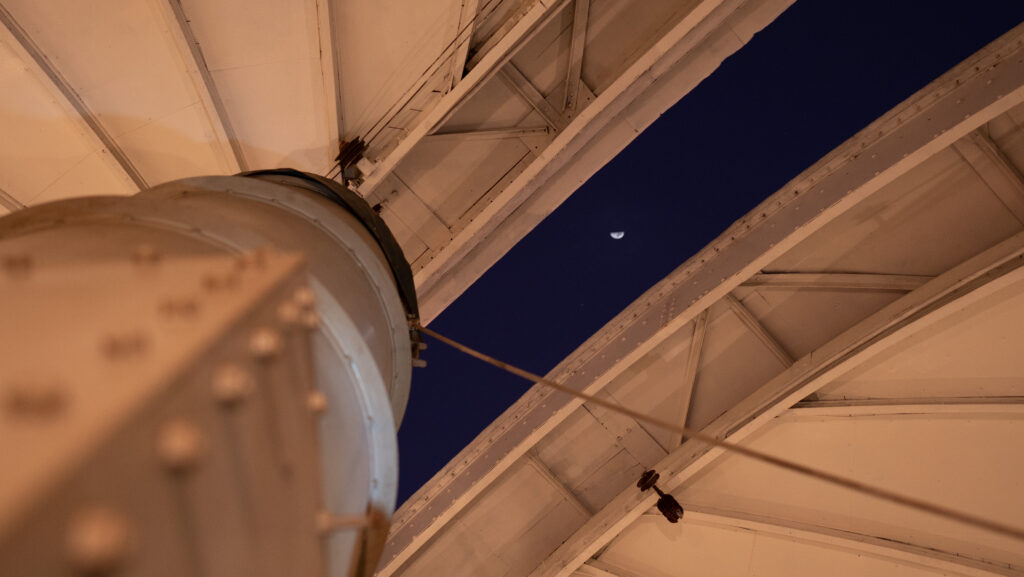Manuel Foster Observatory begins Night Visits at the summit of San Cristóbal
3 December 2022
Added to the daytime visits on weekends is a new offer that includes the possibility of visiting the historic dome at night and observing planets such as Jupiter, Saturn, the Moon and stars close to the Solar System with modern telescopes, all with an impressive view of Santiago at night as a backdrop.

Observe Jupiter with several of its moons and their amazing bands of colors visible through the telescope. Or marvel Saturn’s rings, binary stars close our Solar System, and even see the Moon as if you were flying over it. This is only part of the experience that awaits visitors at the Manuel Foster Observatory, which as of next Friday, December 9th, will begin its night operations thanks to an agreement with Parquemet, on whose summit the Observatory is located.
Installed at the Summit of Cerro San Cristóbal since 1903 by the Lick Observatory of the University of California, the Manuel Foster Historical Observatory was considered for decades the largest telescope in the Southern Hemisphere. Declared a Historic Monument in 2010 by the Council of National Monuments, it was not only the first building to occupy this well-known hill in the capital, but also allowed important advances for astronomy at the time.
In June 2022 the Foster Observatory began to receive daily visits during the weekends, thanks to a project of the UC Institute of Astrophysics -to which the Observatory belongs-, registering about 20 thousand visits during these last months. “We begin a new stage, where we seek to enrich the experience of our visitors by learning about our Solar System, its planets, moons, and nearby stars, all in the wonderful environment of our Observatory, located at one of the highest points in Santiago”, explains Simón Ángel, astronomer and scientific director of Foster Observatory, who is in charge of the tour program.
Foster Observatory by night
Night visits will take place on Thursdays and Fridays, at a cost of $20,000 pesos per person: visitors will be able to access by vehicle from the Pedro de Valdivia entrance, where a Foster team will be waiting to get into a caravan and drive to the groups during the ascent to the summit, with an incomparable panorama of Santiago at sunset during the journey. “Each tour will last close to 45 minutes, including an explanatory talk in the dome of the Historical Observatory. Subsequently, the groups of visitors will move to the terrace of the Foster Observatory, where they will be able to make observations together with the resident astronomers, who will teach them technique for how to observe the night sky”, points out the astronomer.

The group tours have a capacity of 25 people, who will be able to learn about the more than one hundred years of history of the Foster, which in 2023 will celebrate its 120th anniversary since its arrival in Chile. In addition to visiting the enormous historical dome illuminated at night, with its imposing telescope, the tour includes the old dark room that was used to process images and spectra as well as Foster’s own meteorite exhibition, with witnesses of the formation of the Solar System that have been found in various places on Earth.
Guided tour hours:
- 20:30 1st group
- 22:00 2nd group
- 23:30 3rd group
“Remember to look at the stars and not at your feet.”
– Stephen Hawking
Información
local_offer Etiquetas